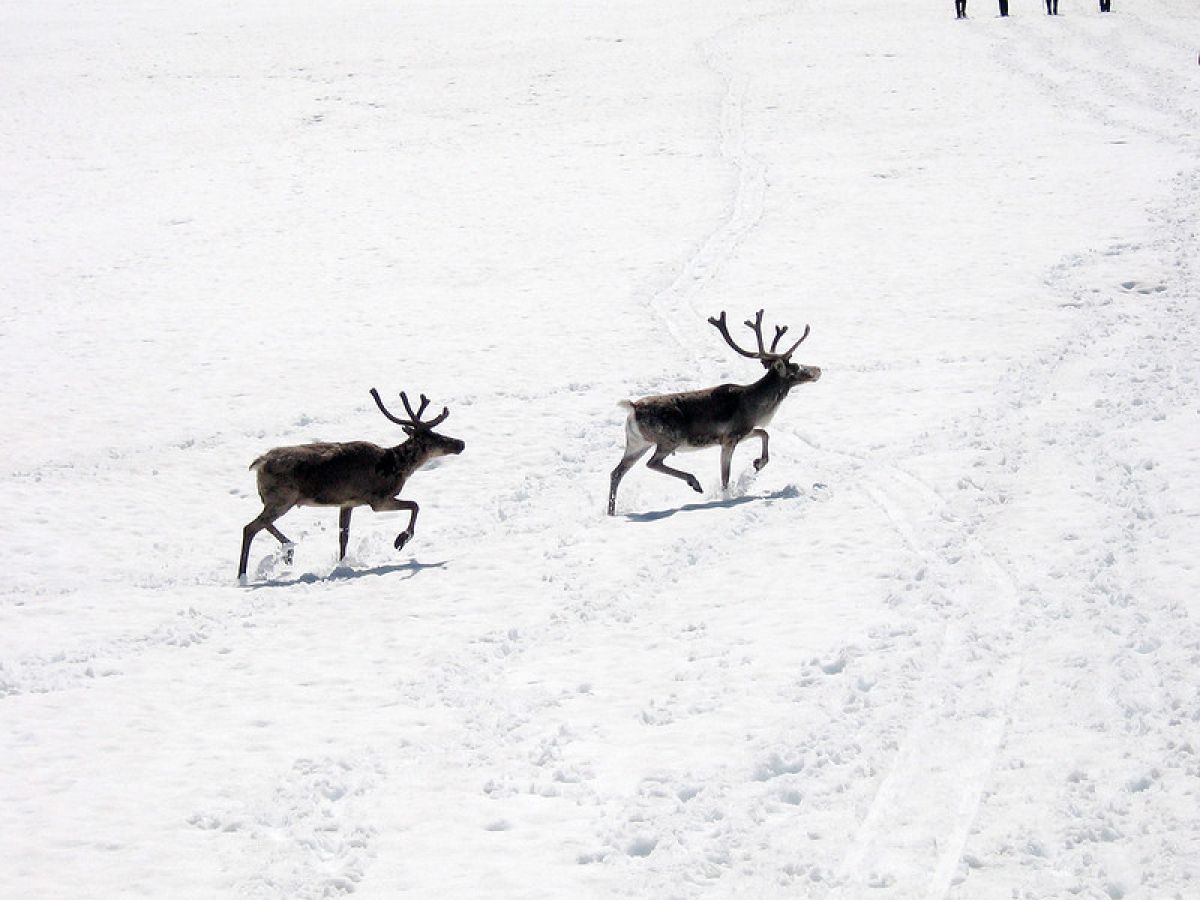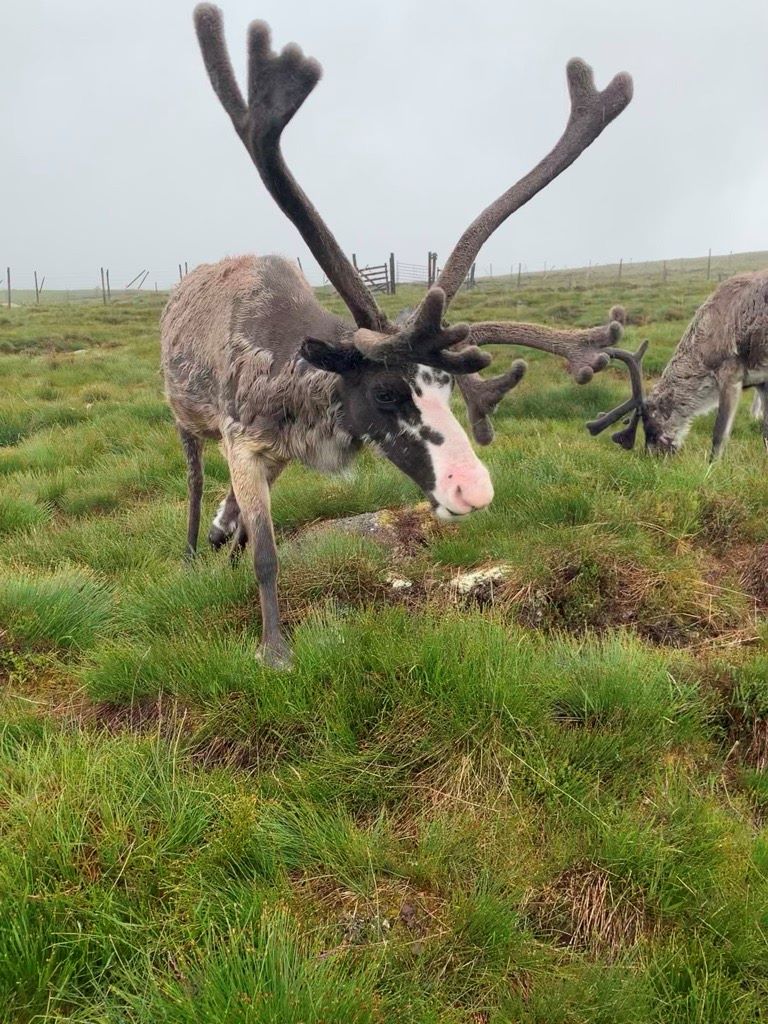How reindeers keep their cool

According to Google, people often wonder how reindeer stay warm in the cold, wintery conditions they mostly call home, as typing “how do reindeers..” into my search engine reveals a series of questions on this point. It’s less often that people wonder or search exactly how they keep cool.
Smart evolution
Thought to have appeared around 2 million years ago, with fossil evidence indicating that they existed at least 750,000 years ago, reindeer have been around since the last ice age. Reindeer, or Rangifer Tarandus, have evolved multiple ways to cope with the winter over this time.
Their unique adaptations include UV-adapted vision for seeing in the long, dark, arctic winters, clicking tendons in their feet to alert herd members of their presence when visibility is poor, and large feet with toes and claws to distribute their body weight keeping them stable in slippery conditions and allowing them to burrow through snow for food.
Reindeer winter coats
Their winter coat is equally as impressive. Reindeer are protected from their cold climate by particularly well-insulating fur, which develops in time for the sub-zero temperatures of the winter months. Their coats, far superior to the best ski-gear money can buy, are so well insulated due to hollow guard hairs which act as an outer shield, with a thick, dense undercoat underneath. This evolutionarily-adapted pelt means the reindeer remain warm in temperatures of -30°C and reindeer have even been seen to persevere in extreme colds of -70°C.
An efficient nasal heat exchange system and vascular changes resulting in a reduced surface temperature, along with these other evolutionary changes, mean reindeers are so well equipped to deal with the cold that they are almost ill-equipped to cool down when they get too warm in winter.
Reindeers can be too hot
So well adapted to negative temperatures, reindeer have very few ways in which heat loss can occur in winter. This means that when metabolic heat production rises rapidly with running speed, they run the risk of hyperthermia.
A Norwegian study conducted at the Department of Arctic Biology of the University of Tromsø investigated how reindeer deal with heat stress in the brain. Thought to have been first domesticated 2,000 years ago, reindeer are sometimes considered to be the most dog-like of the ungulate family, a group of large mammals with hooves including deer, camels, zebras and giraffes.
The dogs of the ungulate world
This comparison with our furry companions checks out when it comes to heat stress: the results determined that when moderately heat-stressed, reindeer pant with their mouth closed through their nose, and upon severe heat stress resort to open-mouth panting to dissipate heat from their tongues.

Closed mouth panting has a cooling effect, as inhaling freezing cold air and evaporating water from mucous membranes in the nose cools blood in the sinuses, and can then be sent to the rest of the body to lower temperatures.
During open-mouth panting, heat dissipates from their tongues as they are ‘richly vascularised’, meaning there are lots of capillaries and blood vessels in the tongue, and well circulated, which allows for heat transfer out of the body via evaporation. However, the Tromsø study indicates that this alone is not enough to cool reindeers down when they are under more extreme heat stress.
Keeping the brain cool
When their brains reach a critical temperature of 39°C, reindeer employ a third mechanism to cool their brains down. By diverting cooled blood from the nose away from the body and to the head, heat exchange between hot and cool blood reduces temperatures of blood flowing towards the brain, protecting it from overheating.
The magical notoriety reindeer have as Santa’s flying troupe is perhaps not such an absurd thought. From their fantastical antlers to their impeccably adapted mechanisms for seasonal changes, these creatures do seem quite other-worldly, even without glowing red noses.







